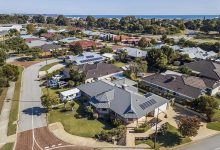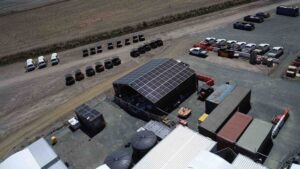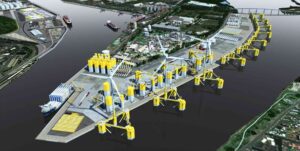Western Australia’s state owned electricity generator and retailer Synergy has named the booming rooftop solar market as a key factor behind a huge loss and asset write down revealed by the government-owned company for the last financial year.
In its FY2018-19 Annual Report, Synergy says the net loss of $657 million – including a $428.9 million impairment on assets and a $152.4 million onerous contract provision – came amid “unprecedented and complex changes” in which the gen-tailer’s core business was “being re-cast.”
The loss – and more of the same to come – was forecast by Synergy in June, when it conceded it was struggling to compete with low-cost renewable energy, not least the huge amounts of rooftop solar that have amounted to the state’s largest generator since early 2016.
In comments this week, Synergy chair Robert Cole painted a picture of small and large-scale renewables eating away at profits and putting increasing pressure on the utility’s coal and gas heavy generation fleet.
“What are now understood with greater clarity are the detailed operational challenges that accompany this – namely, absorbing large quantities of day time spill from PV systems, while ensuring generating plant is available to meet peak system demand at sunset and the growing conundrum of maintaining coal fired plant that remains as critical as ever to system security despite decreasing levels of utilisation,” Cole said.
All told, the state’s South West Intercnnected System (SWIS) saw a 22 per cent increase in the levels of installed solar PV, taking the total capacity to more than 1,100 MW – an amount “significantly larger” than Synergy’s 854 MW Muja Power Station capacity.
Meanwhile, overall system demand fell by 4 per cent to 17,364GWh, continuing competitive pressure in both contestable gas and electricity markets, where Synergy says consumers are benefitting from both reduced wholesale power prices, and reduced demand.
“Our customers are choosing to self-generate with solar PV at increasing rates, and investment in large scale renewables is continuing, leading to significant decreases year on year in the total volume of electricity supplied by Synergy’s scheduled generation assets,” Cole said.
“While our market volumes are shrinking, we continue to bear critical fixed costs such as network access charges, and the costs of holding and making available a broad portfolio of generating assets, ultimately driving up unit costs of supply.
Synergy is not alone in this basket, of course, with Northern Territory government-owned Territory Generation making its own smashed-by-solar declaration earlier this month.
As Michael Mazengarb reported, Territory Generation said in its 2019/2020 Statement of Corporate intent that it faced an “existential risk” from the rise of solar power, with its portfolio of predominantly gas-fired generation assets losing out to the lower cost solar alternatives.
“The introduction of solar power on residential and business rooftops as well as large scale solar farms provides a threat to the viability of [Territory Generation],” it said in the report.
But both companies show equal signs of seeking ways to navigate these “unprecedented and complex” changes, and harnessing the new opportunities they bring, rather than obstinately continuing with business as usual.
And the overall message about renewable energy from Synergy is a positive one, including the embrace of a booming commercial solar market, through industry specific education and the launch of third-party finance aim to continue supporting its growth.
“As a business, we are adapting our culture to thrive in this dynamic environment. A defining part of our culture is that we are not intimidated by a future involving disruption and change. Instead, we are embracing the fact that we will be something different and we are excited by the potential of what we can achieve together,” Cole said.
Cole also pointed to the finalisation of the Bright Energy Investments venture with partners DIF and Cbus.
“Not only was is the right commercial result for Western Australia, it has breathed new life into the business and I am looking forward to seeing the Greenough River Solar Farm stage 2 and the Warradarge Windfarm enter operation during 2020,” he said.
“These two projects achieve many things. New low-cost energy will be introduced to the market, Synergy as energy off-taker will achieve its large-scale renewable energy obligations, progress will be made towards a lower carbon intensive power system, and a boost has been delivered to the Western Australian economy through job creation and investment in the mid-West.”










